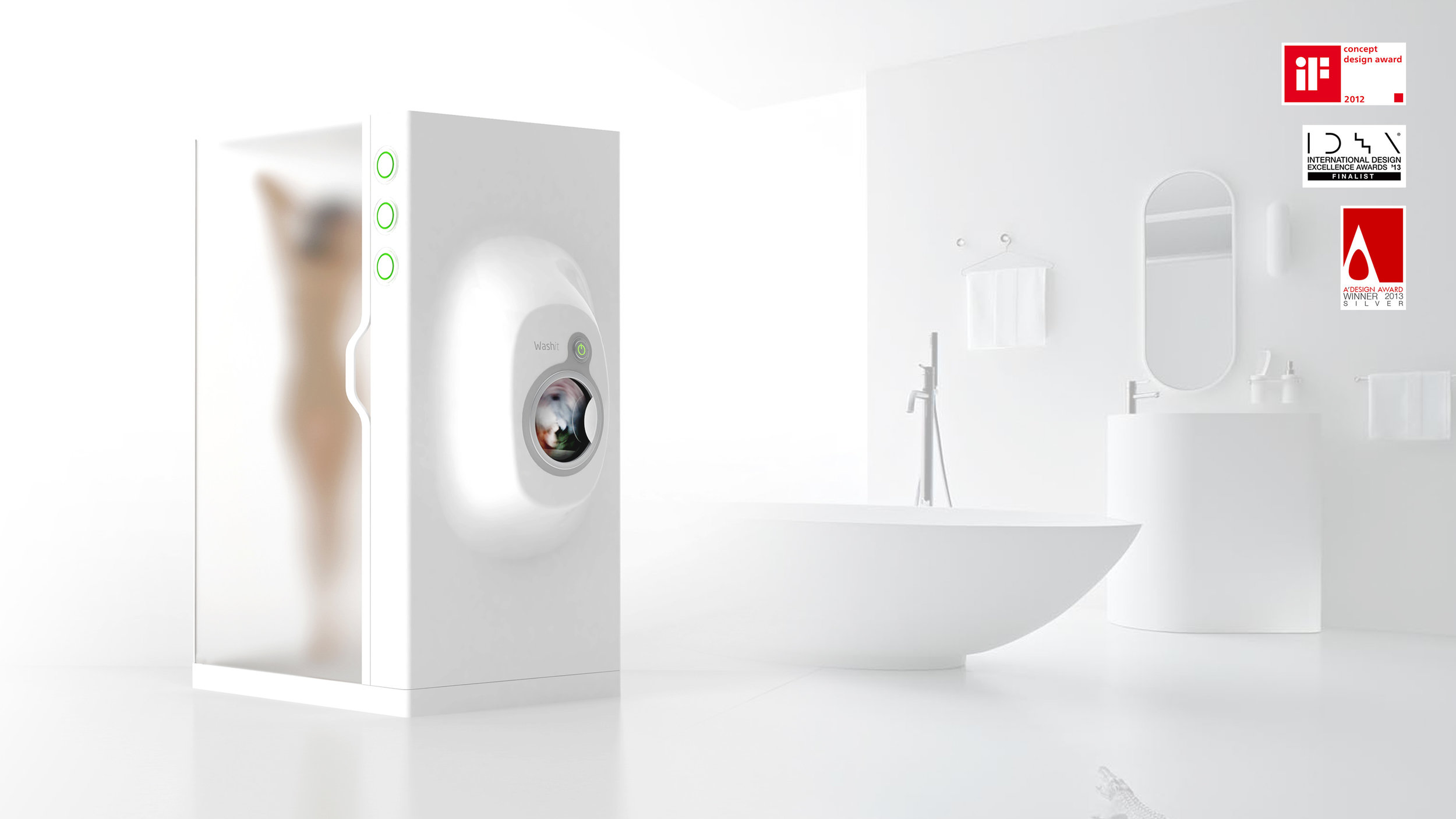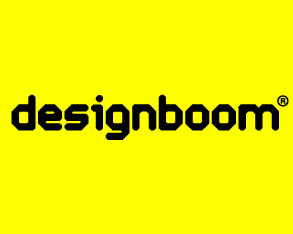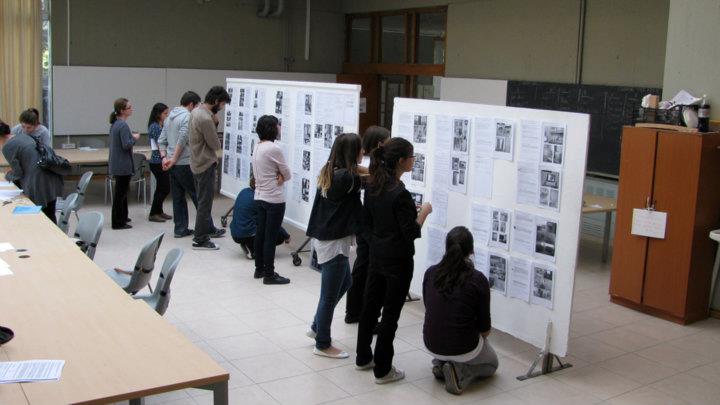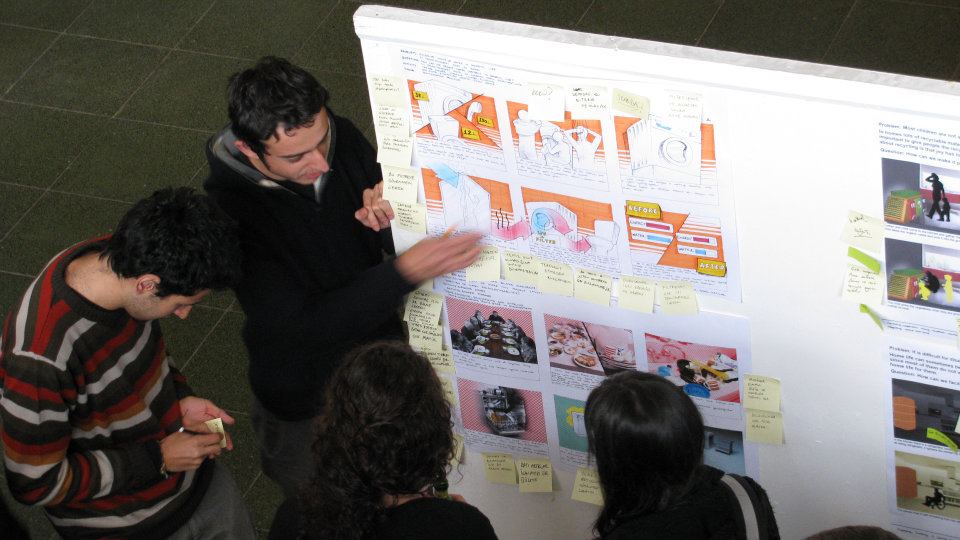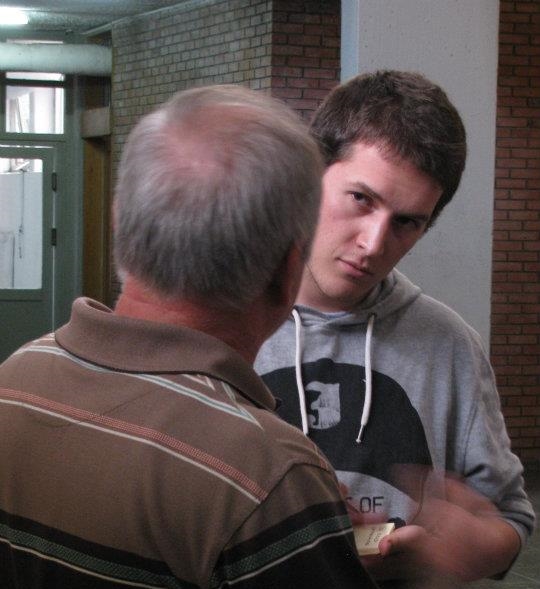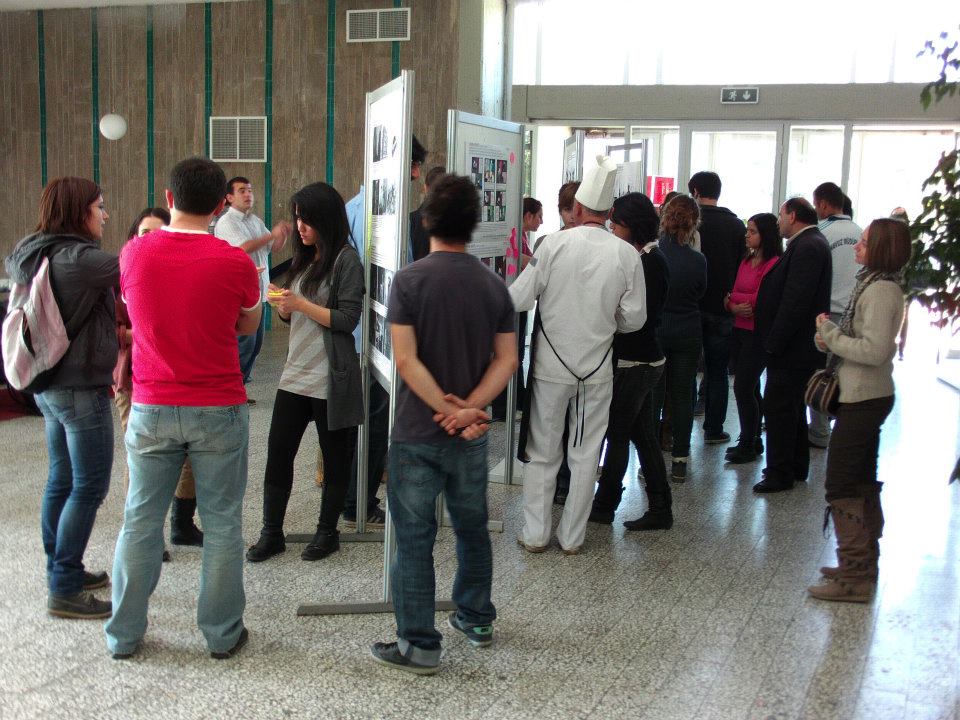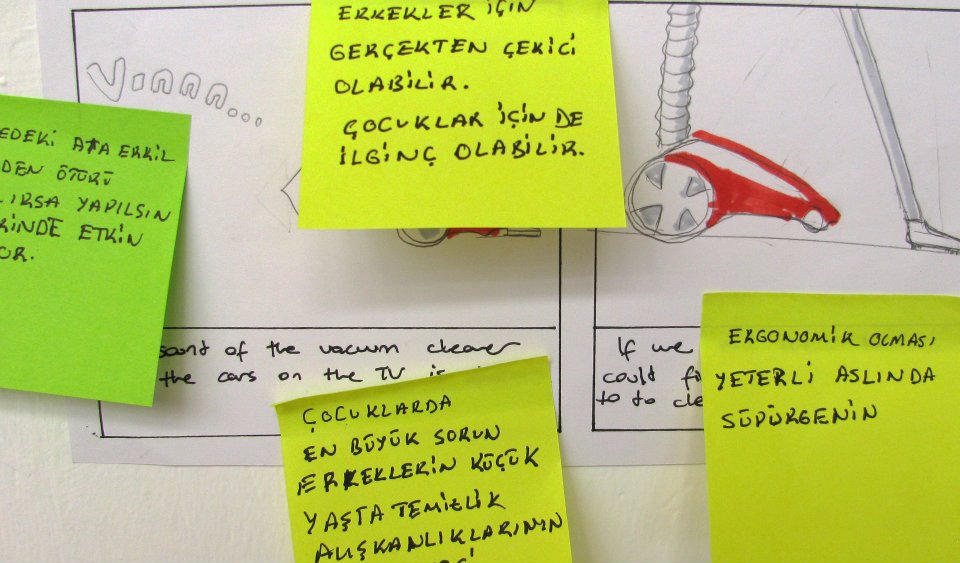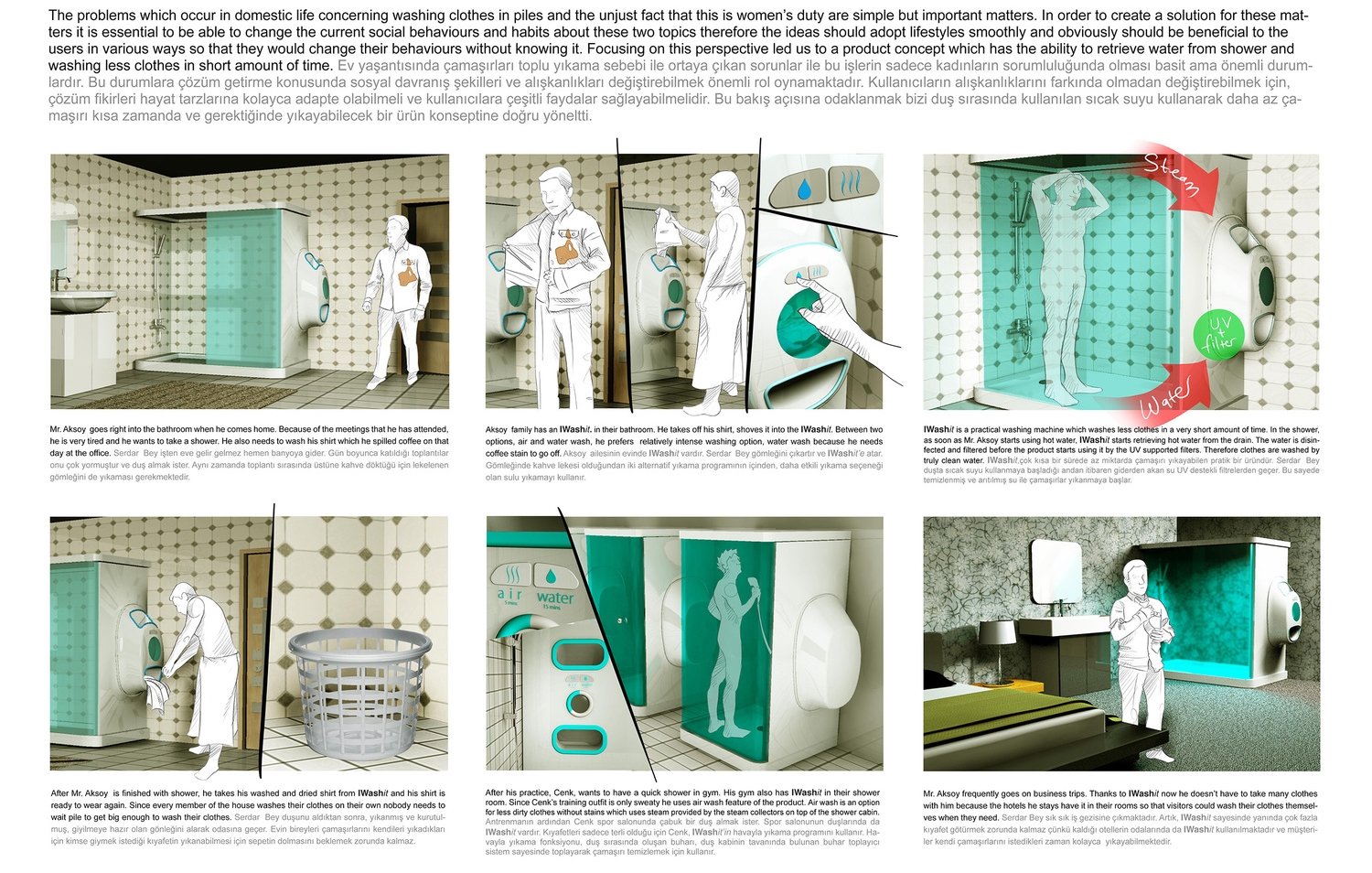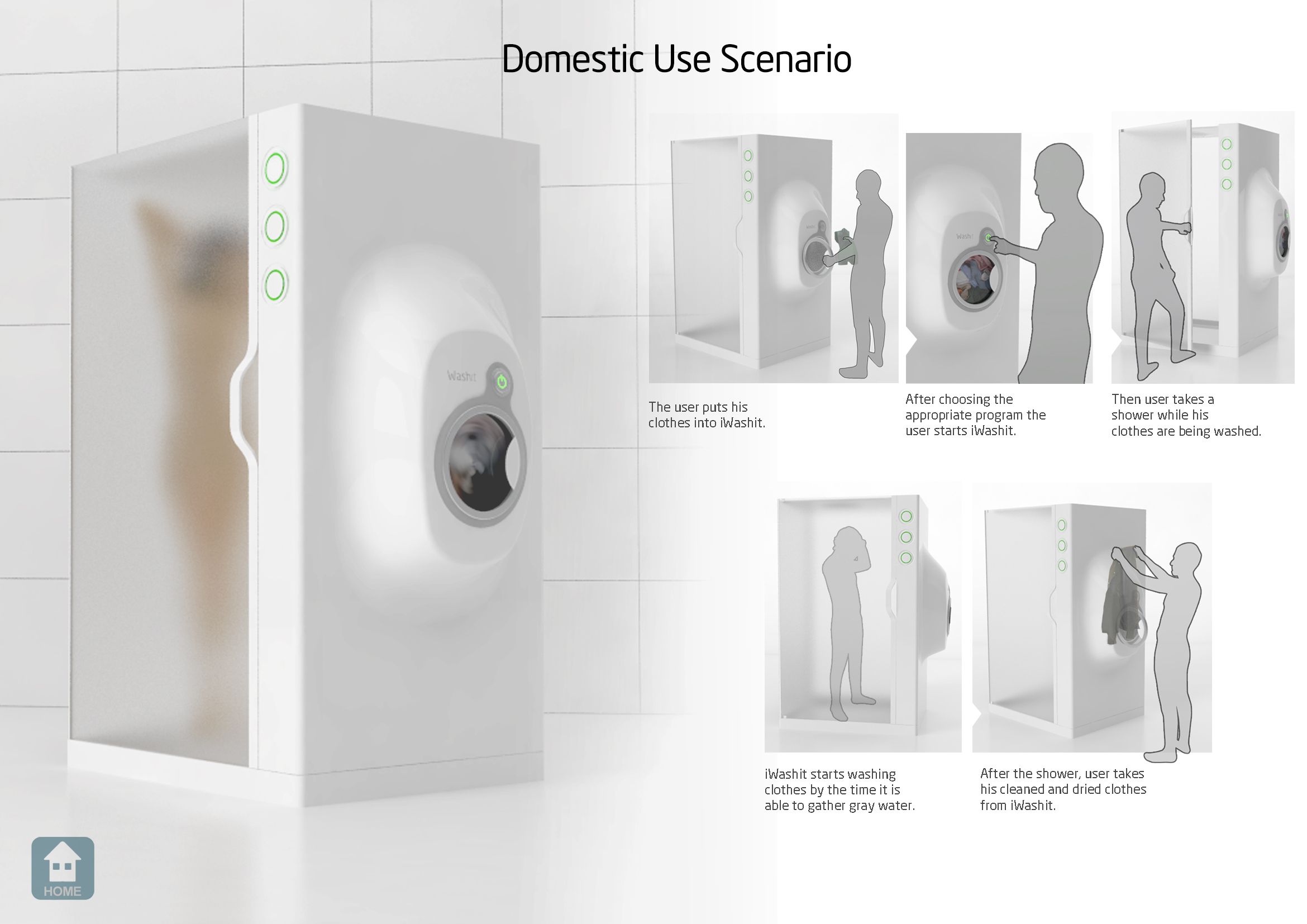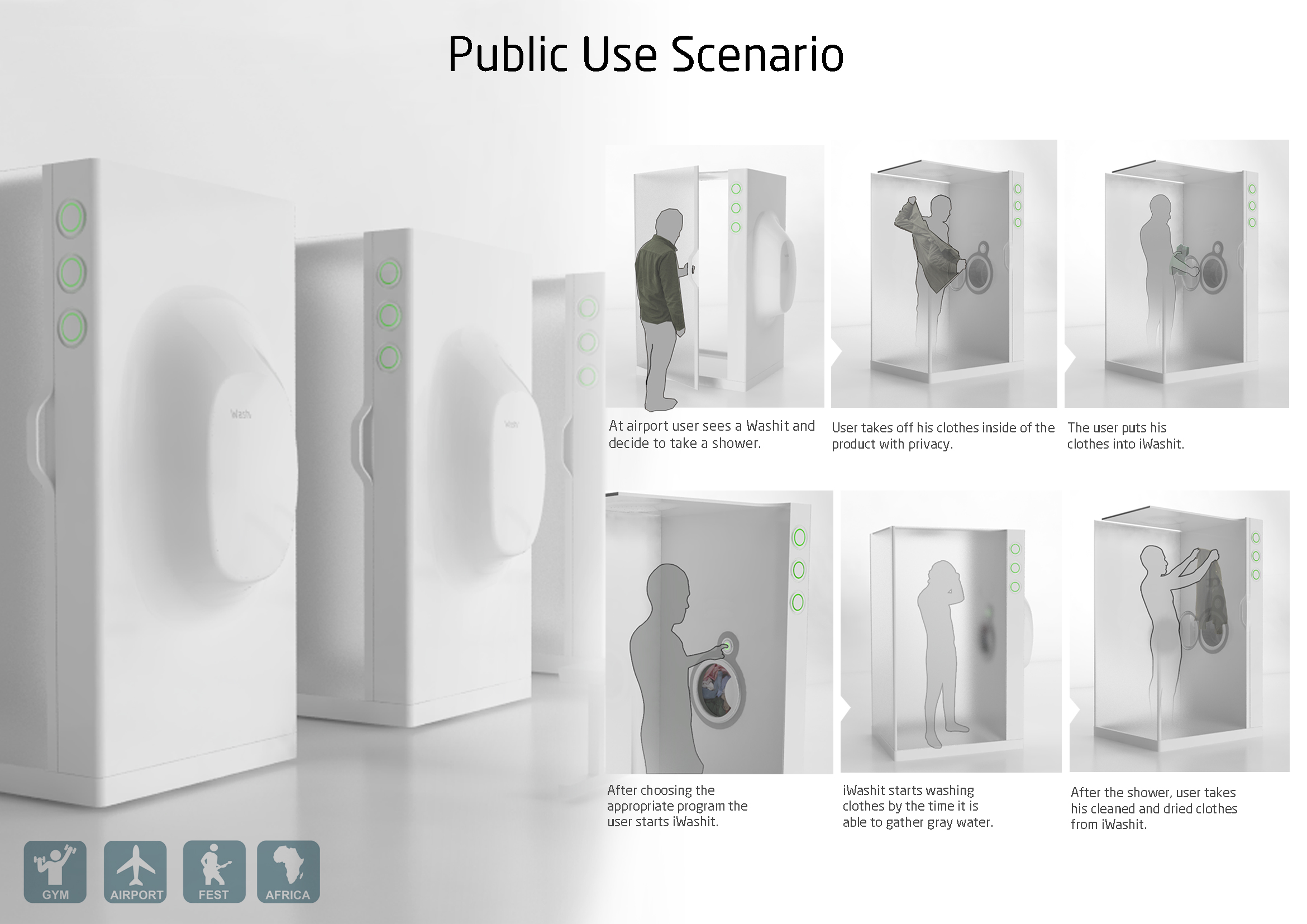Wash-it is a sustainable washing unit concept which integrates the showering and clothes-washing activities in order to filter and reuse the water. Therefore, Wash-it enables users to wash their clothing while showering. Every time the users take a shower, they will have an opportunity to wash their clothing without using any extra water. Wash-it offers a second design solution specially for public usage. Public Wash-it has the ability to refresh clothes with Air-wash technology. Thus, users may take their cleaned clothing back quickly, without bad odors and sweat.
The main objective of the project was to rethink and re-contextualize domestic life and activities through future sustainability scenarios developed by and for household members.
Problem Statement
People use too much water. Showers and washing machines consume the most: 40 gallons for a 15-minute shower and 15 gallons or more for a load of laundry. Also, the large capacity of the average washer means families won't do laundry till they have a full load, making the machines less useful. For instance, if coffee spills on your favorite T-shirt, you have to wait for the next cycle. Fusing a shower cabinet with a small washing machine and letting them share recycled water addresses both issues.
Solution
Rather than change the shower ritual, the design team decided simply to give dirty water somewhere to go besides down the drain. Thus, Wash-it uses a closed plumbing system to collect gray water from the shower and recycle it to a small washing machine embedded in the structure. Water passes through a filtration system and a UV unit (to kill bacteria) before pumping into the storage unit, where it can be used again for showering or the laundry.
Methodology
The project explored the following approaches for the design process:
Scenario building: Developing inspirational and locally relevant future domestic life scenarios focusing on the ‘home heroes’ theme.
Participatory design: Understanding local values, needs and preferences, and co-developing ideas, visions and dreams with the involvement of various potential user groups.
Enabling and empowering design: Favoring locally oriented solutions and scenarios which leverage household members’ skills and knowledge, and incorporate cultural considerations.
Integrative design: Exploring design solutions and scenarios which bridge the gap between natural and domestic environments.
The collective workshops and evaluation sessions involved the participation of many off-campus volunteers from diverse backgrounds and the METU campus community members including students, workers, and administrative and academic staff; we are grateful to them for sharing their dream domestic life and providing generous feedback.
How it Works
1. Rings of LED lights on the edge of the translucent shower cabinet signal when users should change the filters.
2. A heater brings water to the right temperature for both the shower and the washing machine.
3. The washing machine can hold about 3 pounds of laundry. On public units, users would load their clothes from inside the Washit.
4. Two water pumps help circulate clean and dirty water around the system.
5. A tank collects used water and holds newly cleaned water for reuse.
Group project of
Berk İlhan, Adem Önalan, Burak Aktaş, Burak Söylemez, Heja Deniz and İsmail Malçok.

